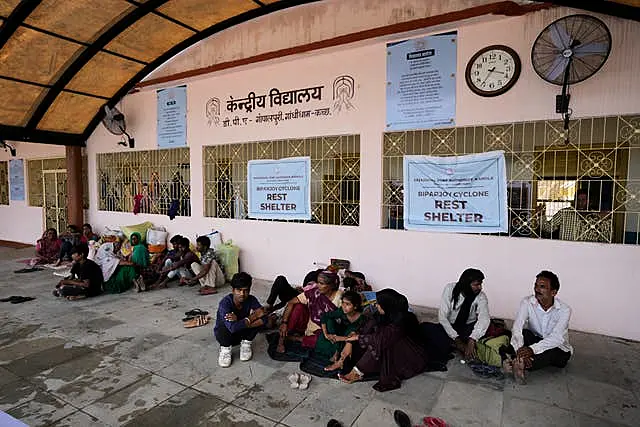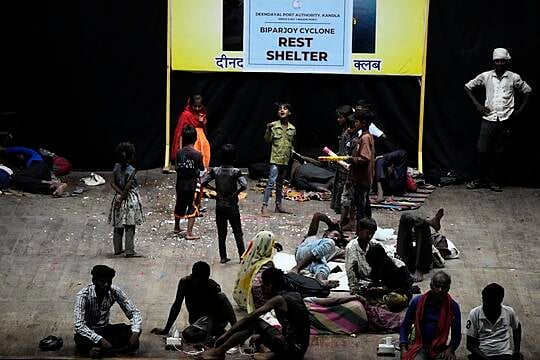Pakistan’s army and civil authorities are planning to evacuate 80,000 people along the country’s southern coast, and thousands in neighbouring India have already sought shelter, ahead of Cyclone Biparjoy’s arrival.
The cyclone is forecast to slam ashore in the densely populated region on Thursday.
It is likely to be the most powerful to hit western India and Pakistan since 2021, and follows devastating floods that ravaged Pakistan last year, leaving 1,739 people dead and causing billions of dollars in losses.
Biparjoy was packing maximum sustained winds of 111mph, according to the India Meteorological Department.

It is projected to hit land near Jakhau port in the Kutch district of Gujarat.
Pakistan’s National Disaster Management Authority said the cyclone was 292 miles south of Karachi, the capital of Sindh province, on Tuesday morning.
In India, thousands were evacuated from low-lying regions, including residents living within three miles of the coast in Gujarat. Those within 6.2 miles of the coast may have to be moved out over the next two days, officials said.
In Gujarat, CC Patel, director of relief in the state government, said 20,580 people from Gujarat’s coastal districts have been moved “to relief camps where they will be provided with food, drinking water” and other essentials.
Authorities also banned gatherings along the beaches and shorelines during the cyclone. All ports, including two of India’s largest, Mundra and Kandla, have been shut down as a precaution.
Government officials in Gujarat told the Press Trust of India news agency that one woman was killed and her husband injured after strong winds caused a tree to fall on their motorcycle.
In Mumbai, in the neighbouring state of Maharasthra, four boys were washed away by a high tide off Juhu Beach on Monday evening.
One body was recovered and search and rescue operations were ongoing for the three others, officials said. Authorities had closed the Mumbai beaches during high tide.
Fishermen in both countries have been asked to stay ashore and move their boats to safer locations.

Fishermen have been asked not to go out to sea (Fareed Khan/AP)
On Monday evening, India’s prime minister Narendra Modi said he chaired a meeting to review the preparations.
“Our teams are ensuring safe evacuations from vulnerable areas and ensuring maintenance of essential services. Praying for everyone’s safety and well-being,” he tweeted.
In Pakistan, authorities backed by the military have evacuated 22,000 people from coastal towns, said Sharjeel Memon, the information minister in Sindh province. The rest of the 80,000 people are expected to be moved before the cyclone’s landfall on Thursday.
Pakistan’s climate change minister, Sherry Rehman, told a news conference Tuesday in Islamabad that the cyclone was expected to hit some of the districts where last summer’s floods killed thousands.
She said the government will do its best to ensure the speedy evacuation of people from coastal areas and promised efforts would be made to return them home once the situation improves.
Experts say climate change is leading to an increase in cyclones in the Arabian Sea region, making preparations for natural disasters all the more urgent. Pakistan is among the top 10 countries most affected by climate change, although the country’s contribution to global greenhouse gas emissions is less than 1 per cent.
A 2021 study found that the frequency, duration and intensity of cyclones in the Arabian Sea has increased significantly between 1982 and 2019.
UN climate reports have also stated that the intensity of tropical cyclones would increase in a warmer climate. A report by the Intergovernmental Panel on Climate Change in 2019 found that since the 1950s, the fastest sea surface warming has occurred in the Indian Ocean.
Cyclone Tauktae in 2021 was the last severe cyclone that made landfall in the same region. It claimed 174 lives, a relatively low figure thanks to extensive preparations ahead of the cyclone.







